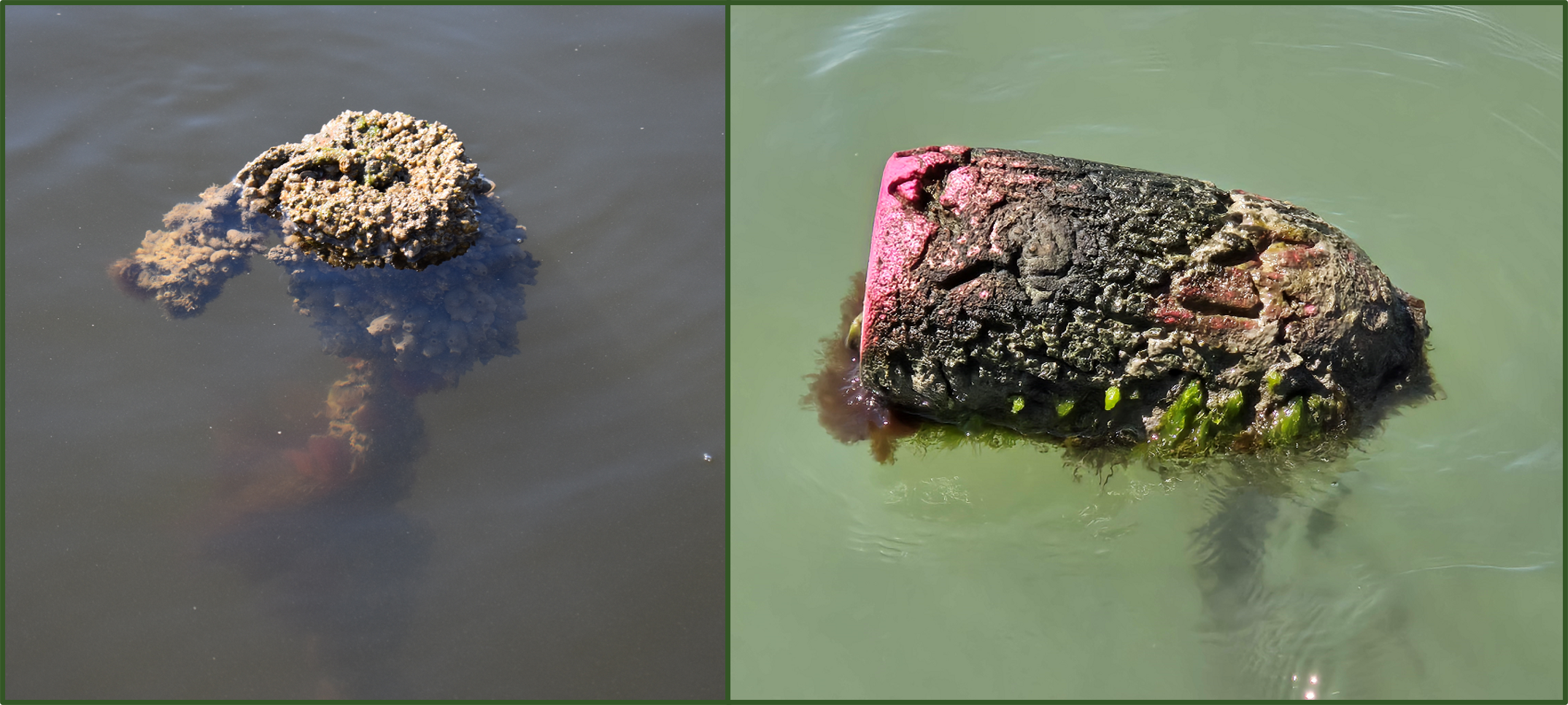Abandoned and Derelict Crab Traps
 Abandoned and derelict crab traps are types of marine debris that can have negative impacts on our coastal marine and estuarine habitats. Such traps are responsible for “ghost-fishing” when they continue to catch a variety of organisms, including various crab species, red drum, spotted seatrout and diamondback terrapin, long after the gear has been lost.
Abandoned and derelict crab traps are types of marine debris that can have negative impacts on our coastal marine and estuarine habitats. Such traps are responsible for “ghost-fishing” when they continue to catch a variety of organisms, including various crab species, red drum, spotted seatrout and diamondback terrapin, long after the gear has been lost.
Traps are at greater risk of becoming derelict (losing their buoy) if they have been abandoned, in part because floats fouled with marine growth are more difficult to see and for watercraft to avoid, leading to boat strikes. Recent research, conducted by the SCDNR, found that once traps have lost their buoys and become derelict, retrieving them from the waters is usually impractical. Identifying and removing abandoned traps is an effective way to prevent them from becoming derelict.
SCDNR is working to identify and map abandoned crab traps from South Carolina estuaries. SCDNR has developed a public survey, linked on this page, to report the location of abandoned crab traps. This survey is intended to gather detailed information on the distribution and abundance of abandoned traps.
Please report abandoned crab traps using the linked survey. Abandoned traps can be identified if their marking buoys are heavily fouled, as in the picture below. For best results on the water, turn on location services on your phone or mobile device and include a photo of the trap. Please do not attempt to remove abandoned crab traps yourself – tampering with commercial or recreational fishing gear is against the law. SCDNR staff will evaluate reports.

Examples of potentially abandoned crab trap buoys.
Thank you for your cooperation! If you have any questions or concerns about derelict crab traps, please contact: crabtraps@dnr.sc.gov
